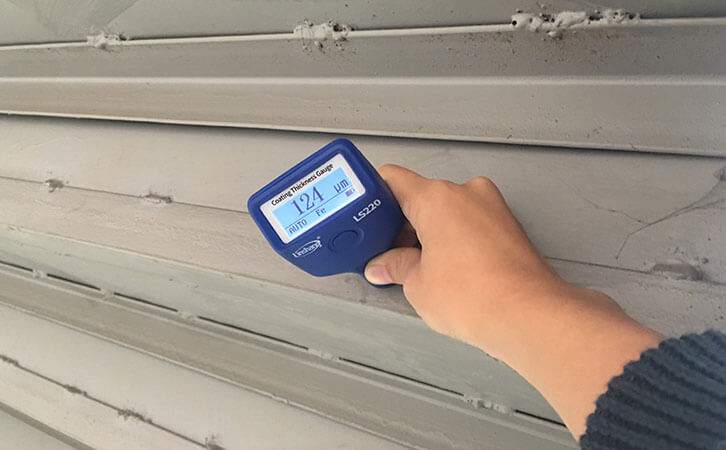Coating Thickness Gauge Measurement Principle
Coating thickness gauge can non-destructively measure the thickness of non-magnetic coatings (such as iron-plated aluminum, iron-chrome plating, iron-plated copper, iron-plated enamel, rubber on iron ). It can also measure the thickness of non-conductive coatings (such as enamel, rubber, paint and plastic coating on aluminum surfaces)on non-magnetic metal substrates such as copper, aluminum, zinc, and tin.
1. Common coating thickness measurement requirements:
● Thickness of copper, chromium, zinc and other electroplated coatings on steel, or coatings such as paint, coating and enamel.
● The thickness of anodized film on aluminum and magnesium materials.
● Coating thickness on non-ferrous metal materials such as copper, aluminum, magnesium, and zinc.
● Thickness of foil, strip, paper, plastic film, such as aluminum, copper, and gold.
● Thickness of thermal spray coating on various steel and non-ferrous metal materials.
2. Classification of coating thickness gauges with different principles:
(1) Magnetic thickness gauge
Suitable for measuring the thickness of non-magnetically permeable layer on magnetically permeable materials. Common magnetically permeable materials are steel, iron, silver and nickel.
(2) Eddy current thickness gauge
Suitable for non-conductive layer thickness measurement on conductive metal. This method has lower accuracy than the magnetic thickness measurement method.
(3) Ultrasonic thickness gauge
Ultrasonic thickness gauges are mostly used by some foreign brands. It can be used to measure the thickness of multilayer coatings or materials that cannot be measured by magnetic thickness gauges or eddy current thickness gauges. But it is generally expensive and the measurement accuracy is average.
(4) Electrolytic thickness gauge
This method is different from the above three types. It is not a non-destructive test. It needs to destroy the coating. Generally, the accuracy is not high and it is more troublesome to measure.
(5) Radiation thickness gauge
This kind of instrument is very expensive (usually more than 100,000 RMB), suitable for some special occasions.
3. Features of coating thickness gauges with different principles:
(1) Magnetic thickness gauges and eddy current thickness gauges generally measure thicknesses of 0-5 mm. These instruments are divided into integrated type and separate type. The former is convenient to operate, the latter is suitable for coating thickness measurement in narrow spaces .
(2) Ultrasonic thickness gauge is suitable for testing thicker and denser materials and the measured thickness can reach 0.7-250 mm.
(3) The electrolytic thickness gauge is suitable for measuring the thickness of gold, silver and other metals plated on very thin wires.
The above is the introduction of the principles and characteristics of several coating thickness gauges. The coating thickness gauges on the market belong to the principle of magnetic thickness measurement and eddy current thickness measurement are mostly used. In particular, some iron-aluminum dual-layer coating thickness gauges combine the two principles of magnetic thickness measurement and eddy current thickness measurement. I hope the above content can provide some help for users when choosing a coating thickness gauge. Hope the majority of users can identify the coating thickness gauge manufacturer when purchasing the instrument
- High precision coating thickness gauge for used car
- Automotive paint protection films coating thickness gauge
- Plating Thickness Measuring Instrument for Detecting Anti-corrosion Coating
- Linshang LS220, LS191, LS160A– Necessary for Car Cover Inspection
- Coating Thickness Gauge for Second Hand Vehicle
- Zero Adjustment Step of Coating Thickness Gauge
